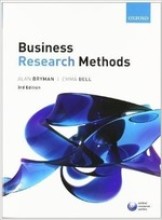Individual and team performance - Teams at work
7 important questions on Individual and team performance - Teams at work
Six characteristics that allow for classification of teams into discrete categories:
- Task interdependence
- Role structure
- Leadership structure
- Communication structure
- Physical distribution
- Team lifespan
Effective team work performance depends on two primary sets of competencies:
- Task work: the function members perform in order to accomplish the team's task
- Teamwork: the interaction among members of teams
Two mainly discussed constructs for team cognition:
- Team mental models (TMM): organized mental representations of the key elements within a team's environment that are shared across team members
- Transactive memory system (TMS): team division of expertise and a shared awareness of who knows what within the group
- Higher grades + faster learning
- Never study anything twice
- 100% sure, 100% understanding
Purpose of team training:
- Understand KSA
- Practice using KSA
- Provide feedback to teams regarding KSA
Different types of team-training:
- Cross-training: team members are taught about the duties and responsibilities of his/her teammates
- Team-self correction training: develop the ability to diagnose the teamwork breakdowns
- Team coordination training: targets accuracy and sharing of TMMs within the team, thus facilitating common understanding of team problems
7 guidelines for creating a productive intercultural team:
- Cohesion
- Ensuring clear and meaningful communication
- Engaging in supportive behaviors to maximize team synergy
- Engaging in perspective taking
- Engaging in negotiation to find common ground
- Creating a sense of psychological safety to facilitate interaction
- Develope shared knowledge to aid coordination
Team composition has the following important factors:
- Managing team diversity (fault-lines; hypothetical diving lines that may split a group into subgroups based on attributes)
- Multiple memberships (coordination and attention)
- Team coordination and adaption
The question on the page originate from the summary of the following study material:
- A unique study and practice tool
- Never study anything twice again
- Get the grades you hope for
- 100% sure, 100% understanding






























